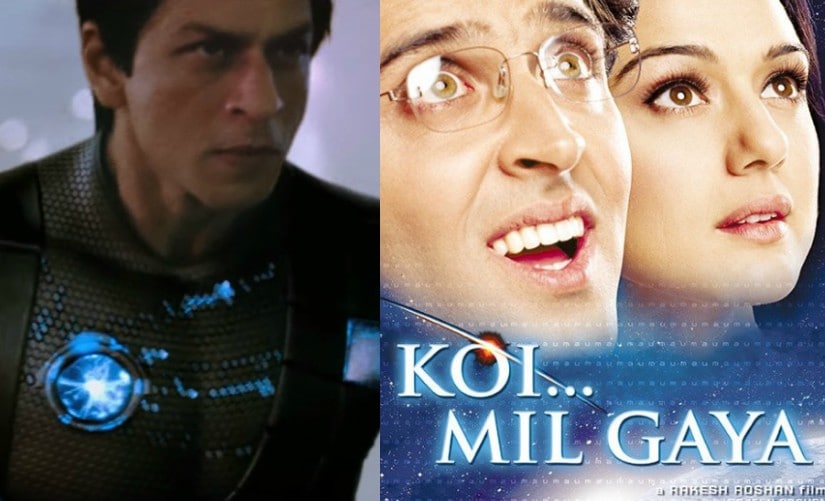Of the many memes based on the Bihar Board exams, one is rather interesting. Three students–one each from CBSE, ICSE and Bihar state board schools–are asked to define a shining object in the sky. The CBSE student says it’s a star, while the ICSE student says, “[It’s] a fixed luminous point in the night sky, which is a large remote incandescent body like the sun.” The state board student says, “Woh rahe Dadaji.” The meme is hilarious, albeit tragically so. Such are the discrepancies in India’s massive and unmanageable education system that a Class X student doesn’t know a star from his deceased grandparent. Science continues to intimidate and elude millions of Indians, even though it is the discipline of choice and springboard for various professions, and in spite of the fact that India has been in the vanguard of inventions and discoveries since ancient times. We invented the number system, decimal point and zero, as well as the weighing scale and chess, and discovered wireless communication, essential surgical methods and tools, and a cure for leprosy, among many other things. Albert Einstein once said, “We owe a lot to the Indians, who taught us how to count, without which no worthwhile scientific discovery could have been made.” Indian cinema, too, maintains a distance from science, although science fiction is one of the world’s most popular literary and cinematic genres. The number of sci-fi productions in India has been extremely limited, and even then, they’ve mostly been weighed down by stereotypical plots and weak story lines. Think Enthiran, which was cool, filled with amazing special effects and a bad-ass Rajnikanth, but hollow in content. Its successor 2.0, which releases this year, is the most expensive Indian film made so far. [caption id=“attachment_4411469” align=“alignnone” width=“825”]  Rajinikanth in a still from Enthiran, a film which was hollow when it came to content[/caption] One of our weaknesses is thinking that dumbing down content or developing it within a prescribed paradigm will always work. In the chapter ‘Science Fiction, Hindu Nationalism and Modernity: Bollywood’s Koi… Mil Gaya’ by Dominic Alessio and Jessica Langer, published in the book Science Fiction, Imperialism and the Third World: Essays on Postcolonial Literature and Film, the authors point out that critical discussion of sci-fi in India has been limited. Filmmakers here have a long history of drawing upon Hindu myths and stories, portraying imaginary worlds more magical than scientific, and while the essence of Koi… Mil Gaya is sci-fi, its Hindu mythological references are unmistakable. In fact, the writers say, “According to James Colmer, who worked on the special effects… Jadoo’s pale blue skin and golden robes were intended to be symbolic of Lord Krishna, while his visage comprised a subtle reference to Ganesh without the trunk.” Sci-fi is speculative, but it derives its source material from science and its possibilities. It attempts to predict the course of civilisation and is able to create a universe within a movie that gives it conviction, and the West has taken incredible strides in this field. Take for instance Dark, Netflix’s first German-language show, which premiered in December. Set in a small town in 2019 Germany, the time travel-based narrative revolves around four families and how they’re connected across the space-time continuum. The plot is fuelled by murders and the disappearances of young boys every 33 years in a time loop, and it explores religion (the role of Antichrist) through addictive storytelling. On the other hand, in India, we have Carbon: The Story of Tomorrow, starring Jackky Bhagnani and Nawazuddin Siddiqui, about the hazards of global warming. Set in 2067, it showcases a dystopian world where oxygen is scarce and needs to be bought in pure form from industries. But while the thought is provocative, pure oxygen is toxic for the human body and can undermine the blood’s ability to carry it. In contrast, Dark’s subject matter is based on speculation – Einstein’s theory of relativity – but yet to manifest. [caption id=“attachment_4411473” align=“alignnone” width=“825”]  Shah Rukh Khan in Ra.One and the poster of Koi…Mil Gaya[/caption] The beauty of sci-fi is twofold. On one hand, it presents a vast realm of hypotheses that can be bent and stretched to fit into an appealing narrative. Star Trek is a great example of this. Sci-fi is also thought-provoking and exciting because it allows consumers to not only engage with science in an acceptable format, but also imagine without inhibition or the pressure to succeed. International productions have popularised sci-fi to a great extent, but in India, our greatest genre successes are still Mr India, Koi… Mil Gaya, Ra.One, PK and the like – none of which score points because of their sci-fi content. A stark contrast to this is the slew of TV shows and movies in the US – Altered Carbon, Travelers, Annihilation, The Flash, Black Panther, and Stranger Things, which highlight the increase in the genre’s popularity. But there’s more hope now than there has been before. With a general – although slow-paced – overhaul in the quality of content coming out of India, sci-fi, too, is finding space. Sujoy Ghosh’s short film Anukul, based on Satyajit Ray’s story, was well-received and it portrayed a sci-fi world without heavy special effects or being set in a dystopian future. Often, we forget that we can speculate about existential changes or space-time anomalies without Imax and 3D.
The Indian sci-fi films which have been made after the 2000s are high on special effects and star power, but low on content and conviction
Advertisement
End of Article


)
)
)
)
)
)
)
)
)



